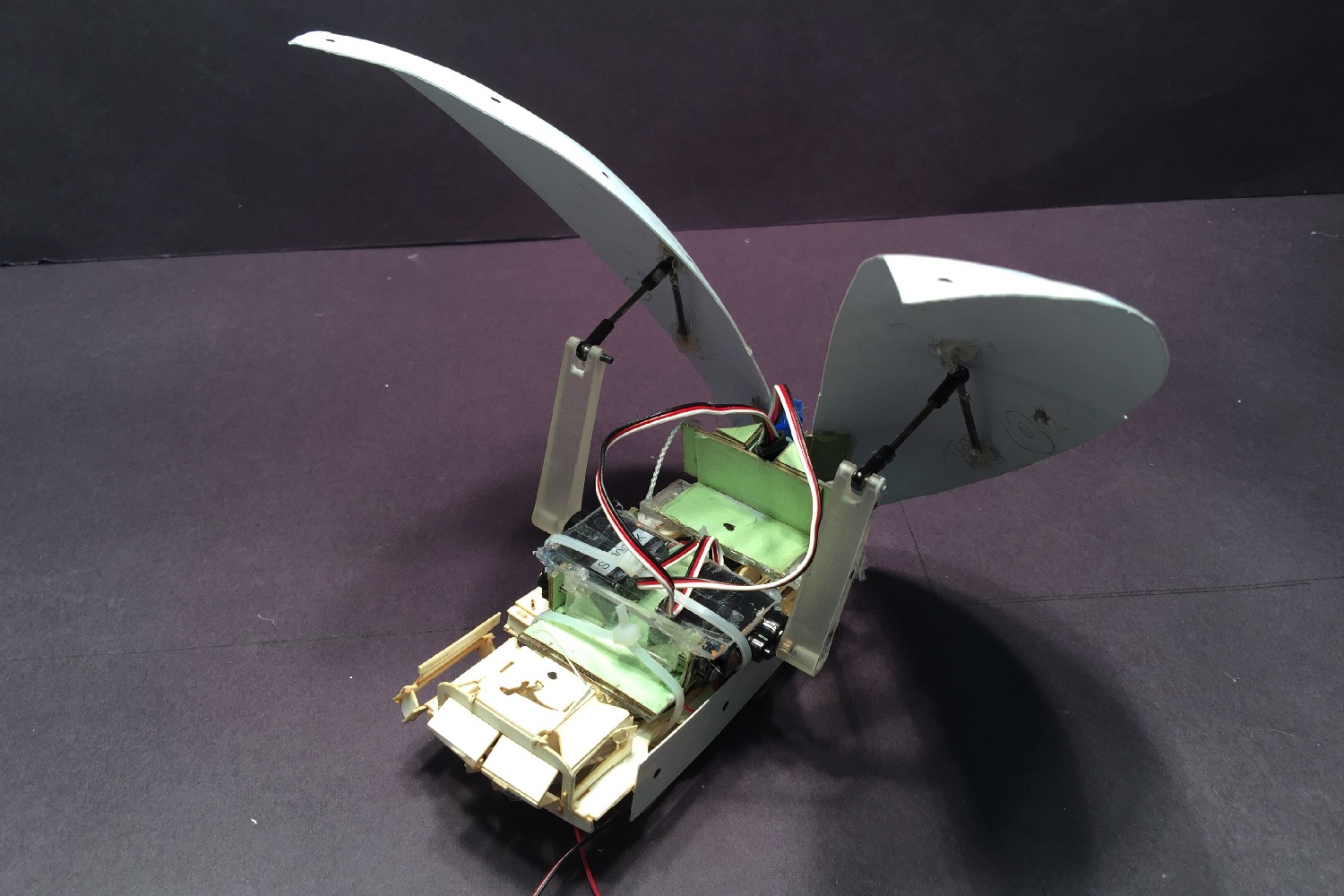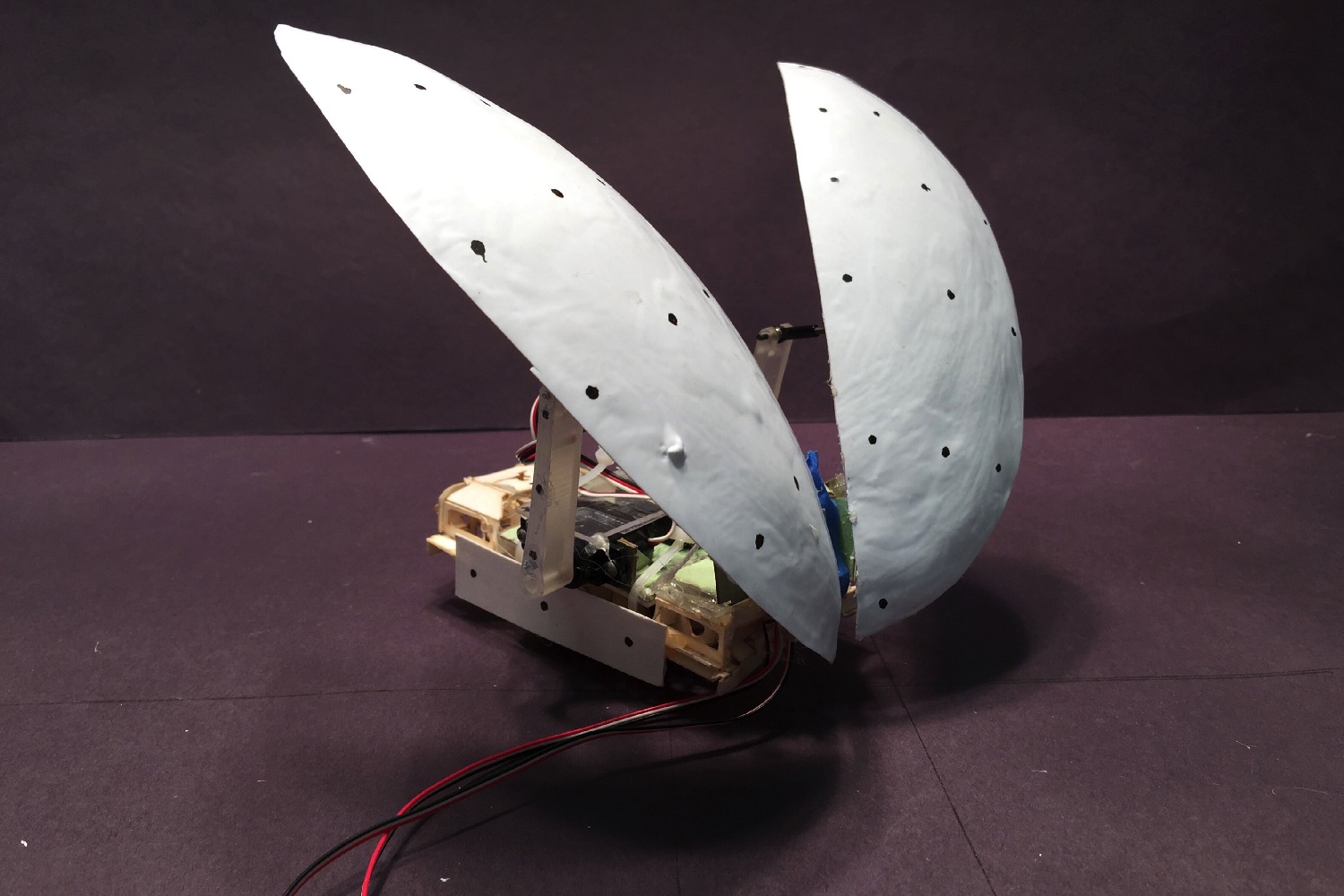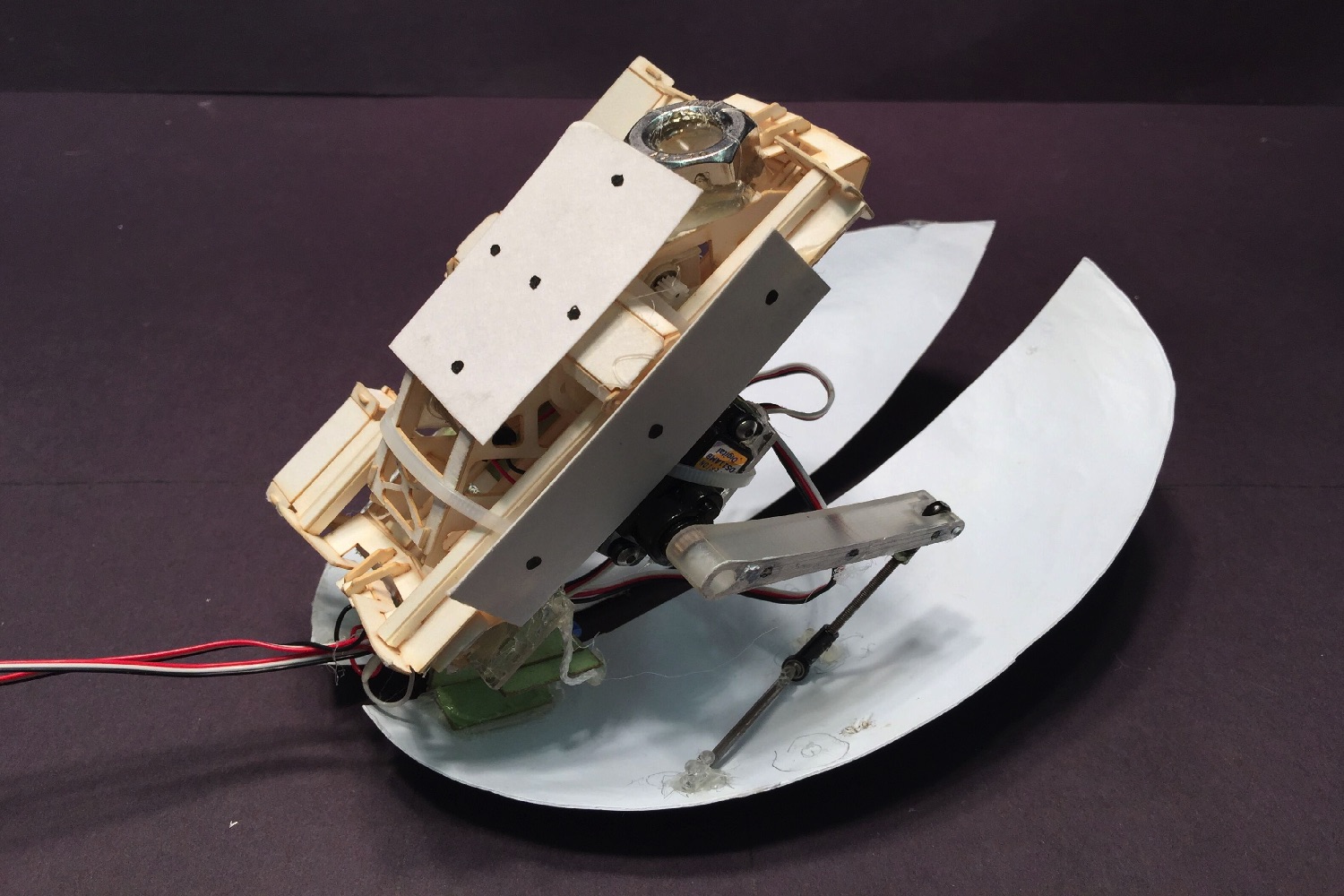So much so, in fact, that he’s been researching them for years — including in his previous role as a researcher at the University of California, Berkeley’s Poly-PEDAL Lab, as well as at Biomimetic Millisystems Lab, where he built a cockroach-inspired robot for climbing over obstacles.
The reason Li likes cockroaches so much is because of their versatility. Depending on what they are called on to do, cockroaches can climb, maneuver over uneven surfaces, fly in some cases, and easily right themselves if they accidentally flip over onto their back.
It’s this last talent that Li set out to explore with his latest “roachbot,” in an effort to solve a problem that plagues a number of even the smartest current robots.
“I got very interested in how cockroaches are able to right themselves — i.e., how they can recover when they are upside down,” Li told Digital Trends. “The reason they can do this is because their wings are multifunctional. When they’re navigating obstacles, their wings are closed and form this nicely rounded shape to reduce resistance. However, when they flip over, they open their wings rapidly to push against the ground and right themselves.”
While other robot makers have built self-righting robots before, Li said many of these have relied on special, additional appendages, like tails or extra legs, that were designed solely for this task. “The uniqueness of our approach is that it uses a multifunctional body structure that can serve different purposes,” he continued.
In keeping with the multifunctional abilities of the cockroach, Li was able to adapt his existing robot design by cutting its shell in two and incorporating some additional actuators.
Going forward, he said that the plan is to combine the skills of his previous obstacle-overcoming roachbot with those of his new self-righting one. “Our eventual goal is to put these together into an integrated robot which can close its wings into a shell when it encounters obstacles it needs to traverse, and then open its wings to right itself if it flips over,” he said.
After that, it’s possible that he could team up with other researchers to explore additional aspects of cockroach locomotion — perhaps one day even building a full robotic replica of the creature in question, complete with all its abilities.
However, don’t expect that one too soon. “If I had to take a guess, that would be decades, rather than just a few years,” he concluded.







